

Canadian
CCA advocacy
CALLS TO ACTION & PROMOTING SOLUTIONS
Travel GF IN ASIA
Media
State of Celiac 20 years after the first survey, what’s changed?
Patient stories
TODDLERS & TEENS TRIUMPH
Nutrition
DO YOU NEED A DIETITIAN?
GF FLOUR 101
CCA board of directors
Board of Directors
President: Lizbeth Wall (BC)
Vice President: Doris Foster (ON)
Secretary: Wanda Walkden (ON)
Treasurer: Andrew Kotys (ON)
National Executive Director: Melissa Secord, CAE
Contact us: Celiac Canada
1450 Meyerside Dr., Suite 503 Mississauga, ON. Canada L5T 2N5
Eyobe Amberber (ON)
Lisa Acimovic (ON)
Nancy Dale (ON)
Stu Guttman (QC)
Rumi Jasvala (ON)
Don Leslie (BC)
Steven Poirier (ON)
Phone: 905.507.6208 or 800.363.7296
Fax: 905.507.4673 | Email: info@celiac.ca
www.celiac.ca
Canadian CELIAC
A MAGAZINE FOR CANADIANS WITH CELIAC DISEASE AND GLUTEN SENSITIVITY
Editorial Board
Marina Michaelides, Director Marketing & Sponsorships
Melissa Secord, Executive Director
Design: Gayle Grin, Art Director www.gaylegrin.design Production Coordinator: Leah Vlasic
Contributors
Phyllis Bordo
Shelley Case
Cuisine L’Angelique
Ashley Gismondi
Robyn Harrison
Mark Johnson
James A. King
Rachel Leong
Caleigh McAuley, RD
Marina Michaelides
Michelle Moraes
Dr. Ines Pinto Sanchez
Melissa Secord
Mary Thompson
Leah Vlasic

A magazine for Canadians with celiac disease and gluten sensitivity SPRING 2024





THE STATE OF CELIAC DISEASE

In 2002, we led the first national patient survey with Health Canada for celiac disease. Back then, it took eighteen months just to enter the handwritten data. In 2005, a scientific paper was published--the largest patient quality of life survey in the world for celiac disease. Fast forward twenty years. On the eve of its 50th anniversary, Celiac Canada launched another national survey to understand what, if anything, had changed?
Three themes emerged: health inequities, affordability and access to safe food. While the study showed incremental improvements in diagnosis rates, how people are diagnosed or managed has become increasingly varied. How the disease presents is also changing, with atypical symptoms, especially neurological, becoming more common. Of course, the longer it takes to diagnose people, the more medical complications will occur, leading to higher costs and impacts on both the health system and quality of life.
Being able to afford to eat gluten-free for people with celiac disease is a serious issue because it’s the only option. The price of these products, 150% - 500% higher than their gluten-containing counterparts, have gone up further since the global pandemic. The cost of gluten-free food forces families to change how they shop and eat. The current incremental medical tax claim regime offers little to no financial support, especially for those on low incomes.
North America still lags behind Europe and Australia with access to safe food options in food service, especially in hospitals and long-term care facilities where people are most vulnerable. Precautionary statements (May contain:) and creative language on labels only create confusion for consumers who need to trust labels to avoid terrible illness.
Underpinning these challenges is the lack of adequate clinical practice guidelines for physicians, lack of awareness among Canadians, no regulations to ensure human rights to safe food and little/no research to support new treatments and management.
There is still no cure for celiac disease, yet there is hope for new treatment options. Unlike twenty years ago, there are many companies investing in pharmaceutical options. The pipeline has never been greater.
Our hope is this study will generate collaborative solutions, thoughtful discussions, and greater awareness in Canada that helps us find, treat and cure celiac disease.
We look forward to your continued support, investing in Celiac Canada to help drive towards solutions for health.
Melissa Secord, CAE Executive DirectorPITTAS


Light, soft and delicately crisp when toasted, try with dips or a tasty sandwich alternative.
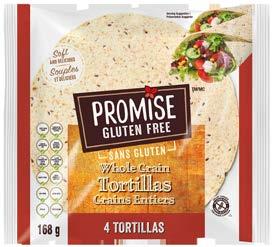
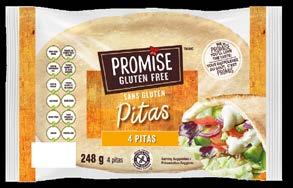


SEEDED WRAP
168g


Bite into the goodness of our seed mix, making your on-the-go meals both satisfying and avourful.

WHITE BROWN LOAF
480g
Sourdough goodness that’s fresh and so unbelievably soft you won’t believe they

SEEDED THINS 160g
A vegan-friendly delightful choice for boosting your bre intake and enhancing your diet.
Bite into the goodness of our seed mix, making your on-the-go meals both satisfying and avourful.
Celiac Awareness month

STATE OF CELIAC
20 years after the first survey, what’s changed?JAMES KING Lead Author, Senior Analyst at Alberta Health Services
We hope you read the full State of Celiac (SOC) survey, launched February 2024, outlining the challenges and proposed solutions to living with celiac disease in Canada today.
It was a challenge trying fit all the interesting findings into one report. To celebrate Celiac Awareness Month, we’re adding some extra insights here.
One of the major strengths of this survey was national coverage – the respondents were engaged and came from every single province and territory. Results describe potential differences in community members’ experiences across Canada.
Although respondents were represented across every province and territory, the less-populated regions of Canada were appropriately lower in sample size – so we grouped the Yukon, Northwest Territories, and Nunavut into “Territories”. New Brunswick, Nova Scotia, Newfoundland & Labrador and Prince Edward Island are grouped into “Maritimes”.
Because the sample sizes of the less populated regions are compara tively smaller it may not be possible to definitively generalize the results compared to more populated regions - but, results offer insight into differences that warrant further investigation.
Delay in diagnosis was one of the most important findings in the SOC survey. Differences in time taken are shown in the graph.
Continued on next page
DISEASE SURVEY
DELAYS TO DIAGNOSIS IN YEARS

Proportion

Less than 6 months
6 months to less than 2 years
2 years to less than 5 years
5 years to less than 10 years
10 years to less than 20 years
More than 20 years
Saskatchewan and British Columbia have a quarter of respondents reporting a diagnostic delay of over 20 years. That’s 10% more people than in Quebec and Manitoba.
At the other end of the scale, Saskatchewan also saw the highest proportion (10%) of individuals with the shortest diagnostic delay of less than 6 months.
Ultimately, these differences may not be extreme enough to warrant major interventions, although further breakdown into other factors such as urban/rural status, age, and access to healthcare within each region could highlight additional variability.

A consistent diagnostic factor across the country was whether a gastroenterologist was consulted before diagnosis. Continued on next page

This brief update sheds further insight into the SOC Survey. We are still analysing more results and will share them in the coming months
At least half the respondents in Quebec (56.4%), Newfoundland & Labrador (53.7%) and Ontario (52.6%), saw a gastroenterologist prior to diagnosis. The rate was close in all other provinces 40–49% except Saskatchewan (38.5%)
More respondents consulted a gastroenterologist after diagnosis, with similar differences across regions: Quebec (72.4%), Newfoundland & Labrador (68.7%), Manitoba (65.5%), Ontario (64.1%), Alberta (59.8%), the Maritimes (56.4%), Saskatchewan (54.0%), British Columbia (52.5%), and the Territories (36.0%).
An inverse pattern was revealed if people were referred to a dietitian after diagnosis: only 57.5% of respondents in Ontario and 61.1% in Quebec saw a dietitian, much lower than rates of 65–69% in the Maritimes, British Columbia, Saskatchewan, and Alberta and as high as 70–80% in Manitoba, Newfoundland & Labrador, and the Territories.
We also found modest differences across the country regarding difficulty following the gluten-free diet:
DIFFICULTY FOLLOWING THE GLUTEN-FREE DIET

Difficulty of GFD
Difficult
Easy
Neither easy nor difficult
Somewhat difficult
Somewhat easy
Very difficult
Very easy
The highest number experiencing difficulty was in Quebec, at 40%, followed closely by the Territories. Conversely, only 25% of Albertans felt the gluten-free diet was at least somewhat difficult. Over 60% found it to be at least somewhat easy. Further investigation would reveal whether urban/rural status, age, and access to healthcare (i.e., gluten-free foods) might explain the variations in each region.
This brief update sheds further insight into the SOC Survey. We are still analysing more results and will share them in the coming months, in blogs, on our website, at upcoming international conferences and submitting peer-reviewed journals. u
Buttermilk Pancakes
Ingredients
¾ cup white rice flour
½ cup gluten-free oat flour
½ cup almond flour
¾ cup potato starch
½ teaspoon xanthan gum
½ teaspoon salt
2 teaspoons baking powder
½ teaspoon baking soda
2 tablespoons sugar
1 ¾ cups buttermilk
¼ cup unsalted butter, melted (or oil)
2 eggs, room temperature
2 teaspoons vanilla

Method
1. In a large mixing bowl, combine the white rice flour, gluten-free oat flour, almond flour, potato starch, xanthan gum, salt, baking powder, baking soda, and sugar. Whisk them together until well combined.
2. In a separate bowl, whisk together the buttermilk, melted butter (or oil), eggs, and vanilla.
3. Pour the wet ingredients into the dry ingredients and mix until combined. Let the batter sit for 5-10 minutes to allow the flours to absorb the liquid.
4. Heat a non-stick pan over medium heat. Lightly grease the surface with a small amount of butter.
5. Pour ¼ to ⅓ cup of batter onto the hot skillet for each pancake. Cook until bubbles form on the surface, then flip the pancake and cook for an additional 1-2 minutes, or until golden brown.
6. Repeat the process with the remaining batter, adding more butter to the skillet as needed.
7. Serve the gluten-free pancakes warm with your favourite toppings.
Get this lesson for free
Create a free account to get instant access to the step-by-step instructional video, printable PDFs, tips, substitutions, & more!
GF risk management
 ROBYN HARRISON
ROBYN HARRISON
When I peruse celiac disease support groups or comments on social media posts, the thing I see most often is fear
I get it; having celiac disease can be hard and even anxiety-inducing at times.
Because we live in a gluten-filled world, living with celiac disease is all about risk management.
I’ve heard of people with celiac who will drink a Corona beer (not celiac-safe, by the way) or lick the icing off a regular cupcake. On the other hand, I’ve heard of
those with celiac who will never eat anything outside of their own home. Ever.
How are you supposed to know if you’re being too risky or playing it too safe?
Many folks rely on monitoring symptoms. If they react to something they ate, they avoid that food in the future. However, this method isn’t completely reliable since many people don’t get obvious symptoms. Also, how do you know that you aren’t just reacting to something else you ate? (Looking at you, bean-filled chilli!) Continued on next page
I realized that it might be helpful for others to know my personal do’s and don’ts that have kept me safe with celiac disease –Robyn Harrison
One of the best ways of determining if you’ve been staying safe on your gluten-free diet is by getting your follow-up celiac blood panel done. It’s recommended that you get this test done annually to ensure your numbers are at a low (or undetectable) level.
Note: Don’t be discouraged if you’re newly diagnosed and your numbers still aren’t at the negative level. It can take time!
Due to pushback from doctors over the years—“You already know you have celiac disease! What’s the point?”—I didn’t get mine done until last year… about eight years into my celiac diagnosis.
When I eventually got this testing done and saw my numbers were at that undetectable level, it felt like I finally had proof that my risk management was working. I was successfully avoiding gluten, while not feeling too restricted in my everyday life.
I then realized that it might be helpful for others to know my personal do’s and don’ts that have kept me safe with celiac disease.
HERE ARE THE RISKS I’LL TAKE, AND THE RISKS I WON’T
Disclaimer: These are based on my personal experience living with celiac disease, but I am not a medical professional and this is not medical advice
DO EAT AT REGULAR RESTAURANTS
This means that they don’t have to be a dedicated gluten-free restaurant (although I do love a dedicated gluten-free restaurant). If you want to enjoy meals with friends and family, you need to be flexible when it comes to choosing a restaurant that offers both gluten-free and regular options.
That said, I always choose restaurants with gluten-free marked on the menu or call ahead to ask about gluten-free options.
I also limit the number of meals out (1–2 times per month), which helps keep the risk low. If you eat out regularly, the risk will be higher.
DON’T EAT AT ANY RESTAURANTS WHERE I’VE BEEN SICK BEFORE
When I was first diagnosed, I was much more trusting with restaurants. Even if I got sick, I would give a restaurant at least 2–3 chances before stopping eating there. After a couple of years of what felt like “Restaurant Russian Roulette”, I realized it wasn’t worth it anymore.
I will only give a restaurant a second chance if they can show me that they are mitigating risk. For example, if the first time I got sick from something put in a shared deep fryer without my knowledge—like the tofu in my pad thai—and they offer to pan fry it this time instead, then I might consider eating there again.
On the flip side, if they point to the wheat-filled wontons on the menu and suggest I order that instead, I run! (true story.)
DON’T EAT FROM CONTAMINATED FRYERS
After my celiac diagnosis, I tried some of those “gluten-friendly” options that were cooked in a shared fryer. Big mistake. Occasionally, I wouldn’t react to it, but most of the time, I would end up on the floor with sharp pains in my gut.
In my opinion, it’s never worth the risk. And this is speaking as a gal who loves fries more than anything. Continued on next page
ALWAYS double-check when a meal is placed in front of you that it’s gluten-free. Always – Robyn Harrison

DO GET SOMEONE ELSE TO TRY (IF IN DOUBT)
There have been times when food has been put down in front of me that looks too good to be true. A few times, it was too good to be true, and I got very ill.
Now, I will get someone else to try a piece of my bun or pizza crust first to see if it’s actually gluten free. Usually, they can tell by the taste or texture, which gives me some piece of mind.
For the record, this is in addition to double-checking with my server at a restaurant. ALWAYS doublecheck when a meal is placed in front of you that it’s gluten free. Always.
DO
EAT AT FRIEND’S HOUSES
I am lucky that my friends are very accommodating when I come over. They are happy to read ingredient labels and make sure everything is safe. I always ask ahead to check what they are making and what kinds of ingredients they are using (including spices). If there’s anything I’m not sure about, I’ll get them to send a picture of the ingredient label, just to be safe.
Suppose they are making a charcuterie board with non-GF items. In that case, I usually ask for a separate plate to fill up so I don’t have to worry about crumbs getting on or in the food. And I offer to bring the gluten-free crackers, as I know they can cost a pretty penny!
DON’TEAT GLUTEN-FREE BAKED GOODS FROM A REGULAR BAKERY

There are just too many ways that cross-contact can occur in a regular bakery. Between flour in the air landing on surfaces, shared equip ment and ovens, and possibly even shared ingredients (like sugar or baking powder), to me, it’s just not worth the risk.
I’ll only make an exception if I’ve spoken to them ahead of time and feel comfortable with their protocols. For example, if they only bake the gluten-free items on a different day, with separate ingredients, and everything gets thoroughly scrubbed down in between. But how many bakeries do that?
DO EAT FOOD PRODUCTS THAT AREN’T CERTIFIED GLUTEN FREE
Certified gluten-free items are great, but not everything you eat needs to be certified gluten free. As someone with celiac disease, I highly recommend learning how to read ingredient labels and understanding high-risk and low-risk food categories. Celiac Canada has an excellent resource for this. It can take a bit of practice, but it opens up the possibilities of what you can eat (and saves money, too!). Continued on next page

For me, it means learning to bake all my favourite foods at home, so I never feel like I’m missing out – Robyn Harrison
DO
ALLOW GLUTEN FOODS IN OUR HOME
I’ve heard some people who want their entire household to be gluten free to feel completely safe. That may be the right choice for some people, but I don’t feel it’s necessary for us. We have a few rules, however, that help make me feel safe.
DON’TCHEAT
I treat, I don’t cheat. Whether or not you get obvious symptoms, cheating on your gluten-free diet is just not worth the health risks. Part of how I keep myself from avoiding the temptation to cheat is by treating myself.

This could mean finding those go-to gluten-free grocery store items that you love and can grab if you ever feel that temptation to cheat.
We have separate toasters and keep the regular bread in a different area. My husband tries to buy pre-cut bread products whenever possible, but if not, he will cut it over parchment paper and immediately wipe up any crumbs. We also make sure to label if anything unpackaged comes into the home that contains gluten. (Unfortunately, we learned this the hard way...)
DON’TBAKE WITH REGULAR FLOUR IN OUR HOME

For me, it’s a comfort-level thing. I think that if you’re really careful, you could successfully bake both gluten and gluten-free at home, but for us, it’s not worth it. To feel comfortable, I would want all separate baking ingredients (like sugar and baking powder), and everything would need a deep scrub between baking.
For us, baking is all about sharing, so we only bake things we can enjoy together.
For me, it means learning to bake all my favourite foods at home, so I never feel like I’m missing out. Who needs gluten when you can make gluten-free Belgian waffles with chocolate hazelnut spread, fresh strawberries, and whipped cream at home?
Living with celiac disease is all about finding the right balance. It’s okay to be careful, but you don’t have to restrict yourself to the point where you feel like you can’t live your life fully. By finding a middle ground and making informed choices, you can live happily and healthily with celiac disease, enjoying the things you love while staying safe. u

Enjoy this article? Watch the full video on my YouTube channel, Robyn’s Gluten-free Living.
RESEARCH
– M c MASTER SURVEYImproving our health FOOD INSECURITY and sticking to a gluten-free diet
RACHEL LEONG & M INNES PINTO-SANCHEZSticking to a strict gluten-free diet (GFD) is the only available treatment for celiac disease (CD). However, following a GFD can be inconvenient and expensive, costing up to 400% of the price of regular gluten-containing foods. As a result of this increased cost, a proportion of people diagnosed with CD are unable to fully stick to a GFD.
Food insecurity -- not having access to sufficient food or food of adequate quality to meet one’s basic needs -- is particularly concerning in celiac disease as the GFD is not a lifestyle choice but a medical treatment for this condition.
Nonadherence to a GFD leads to persistent intestinal inflammation
Continued on next page
Food insecurity – not having access to sufficient food or food of adequate quality to meet one’s basic needs – is particularly concerning in celiac disease as the GFD is not a lifestyle choice but a medical treatment for this condition
Nonadherence to a GFD leads to persistent intestinal inflammation with increased risk for complications, including nutrient deficiencies, osteoporosis, susceptibility to virus infections, pneumonia, and increased risk of certain cancers
... we conducted a prospective study on patients attending our McMaster Adult Celiac Disease Clinic from November 2022 to January 2024

with increased risk for complications, including nutrient deficiencies, osteoporosis, susceptibility to virus infections, pneumonia, and increased risk of certain cancers.
In 2022, 2.8 million people in Ontario were food insecure. To investigate the magnitude of the problem in our adult celiac population, we conducted a prospective study on patients attending our McMaster Adult Celiac Disease Clinic from November 2022 to January 2024.
Participants completed several validated questionnaires to assess GFD adherence, quality of the diet, quality of life, celiac and gastrointestinal symptoms, anxiety, depression, and food insecurity. Food insecurity was
assessed using the validated Canadian Household Food Security Survey Module.
A preliminary analysis of 287 participants found that 1 in 6 (16%) of our population reported food insecurity, and a great majority were moderately or severely food insecure. Furthermore, 5% of our patients reported not being able to feed their children due to food insecurity.
After further analysis, we found that people with CD and food insecurity were less frequently sticking to the GFD and reported decreased quality of life, increased celiac and gastrointestinal symptoms, as well as anxiety and depression. The quality of the diet was the same, as it was similarly poor in both food-inse-
cure and food-secure groups.
We presented the results of this study at Canadian Digestive Diseases Week this year, the largest Canadian Gastroenterology conference organized by the Canadian Association of Gastroenterology. Moving forward, we will continue collecting data to assess changes over time, and with the support of our Farncombe Institute Nutrition initiative, we plan further research to understand the unique challenges faced by CD patients preventing them from accessing their treatment.
Our findings highlight a critical need for programs and societal measures to address food insecurity and ensure adequate access to treatment for people diagnosed with CD. We believe that a collaborative effort with Celiac Canada and our government will be crucial to achieving this common goal to improve the health of our Canadian celiac population. u
Rachel Leong, Bachelor of Health Sciences (BHSc) Student, McMaster University
M Ines Pinto-Sanchez, MD, MSc
Adult Celiac Clinic at McMaster University, Hamilton Health Sciences
Patient perspective

STARVING for gluten free. FOOD BANKS EMPTY.
As many of you face the challenge of the rising cost of gluten-free food, imagine if you’re dependent on food banks to eat anything at all
The CCA is building programs to educate food banks as part of the Save Me For Gluten Free program, sponsored by O’Doughs, where gluten-free food is put aside, only for those who need it. We asked you to tell us your experiences finding gluten-free at food banks and discovered there’s a long way to go. This true story is based on one reader’s experience and outlines the mountain needing to be climbed to find GF food on a low income. It’s a harsh, scary story. We’ll do all we can to change the scenario and your donations help us create viable solutions.
I’m a 29-year-old female with biopsy-confirmed celiac disease (CD) living on shared $1,300 disability support per month for all bills and needs. I face many barriers to employment. I’m trapped in the cycle of chronic poverty which makes sticking to the gluten-free diet extremely difficult. Continued on next page

The food bank program in my community is on tenday rotation, meaning you visit three different food banks ten days apart. Then repeat.
It’s hit and miss. I sometimes leave with nothing, other times a small gift card - which is actually the best possible outcome so I can shop for gluten free. Sadly, some staff act like I’m only after a gift card and don’t realize it’s because I can’t have other options. It’s often quite unfriendly. I still thank them and make them aware it’s likely all I’ll get for over a month because the other two food banks usually have nothing I can eat gluten free.
The second food bank coordinator is very nice, but I can tell she thinks celiac disease is just an intolerance or it’s a choice, like Keto or being vegetarian. I try to educate staff that untreated CD causes organ damage, malnutrition, infertility, and can lead to various cancers. I made it clear many times that if it was only vomiting, I’d just eat the gluten. We all know that’s not the case.
The setup is they pick items for you, and wheel them to your vehicle. There’s no chance to trade an unusable item or read ingredients.
The third place is by far the least successful for getting anything gluten free. The setup is where all items are displayed like a store, costed with points and a volunteer must okay what you select. Basically anyone, celiac or not, can select a product, so the gluten-free often goes first because people assume it’s healthier, will help them lose weight, or it’s a premium product. I have had zero success explaining the GF products are the only items I can have. On my most recent visit, a volunteer whose husband had celiac told me to just grab what I could for the rest of my family so I had more money to spend on food for me. “There’s nothing here for you,” she explained.
The other problem with the points system is you are only allowed to use a pre-set per section regardless if you’re not able to eat anything in the other sections. That means if you wanted two gluten-free items in the same section you can’t use your points for both. No matter trying to explain there’s nothing in the other sections you can eat.
I understand that gift cards aren’t available at every food bank. But I don’t understand why donated gluten-free items are not kept separate solely for the people who truly need gluten-free goods.
u On
my most recent visit, a volunteer whose husband had celiac told me to just grab what I could for the rest of my family so I had more money to spend on food for me.
“There’s
nothing here for you,” she explained ... I don’t understand why donate gluten-free items are not kept separate solely for the people who truly need gluten-free goods
Continued on next page


Continued from previous page Celiac Canada recently visited a major food bank to see how we might build a program that specially caters gluten free. The problem is that demand is so high - the amount of food needed in a month today used to cover a whole year before Covid. Many food banks cannot meet demand so give whatever they have, gluten free or not. Additionally, volunteers pack most food boxes and there simply aren’t the resources or the infrastructure to train people coming in for a few hours to navigate a gluten-free system.
If you’d like to donate to a food bank, check out whether they can keep things aside for those with celiac disease. Long-term, Celiac Canada’s goal is to work with food banks and manufacturers to secure a steady supply of product to one food bank in each major town or rural distribution point, so everyone is covered. We’re a long way from that now so any help or suggestions are gratefully received. Write to us
HOW YOU CAN HELP MAKE A DIFFERENCE
z Volunteer with a local Celiac Canada Chapter and their local food bank initiatives
z Become a ‘Save Me for Gluten Free” ambassador at your local food bank.
z Donate GF Food: A list of local food banks offering gluten free is on our website.
z Donate to CCA: Support our Save Me for Gluten free initiative with a financial gift to Every gift matters u



Advocacy section
State of Celiac –CALLS TO ACTION
It’s critical we take what’s learned from our major health study and find solutions to drive improvements in health outcomes for people living with celiac disease. We’ll be advocating for :
THEME 1: CELIAC DISEASE HAS AN INEQUITABLE IMPACT ON CANADIANS
1. Develop a national celiac disease strategy to reduce wait times and under-diagnosis rates particularly in at-risk populations to improve health outcomes. Increase investment in celiac disease research and awareness.
z Standardize use of celiac disease International Classification of Diseases (ICD) code to better track diagnosis of the disease in Canada.
z Recommend development of Canadian-based clinical practice guidelines by the Canadian Association of Gastroenterology to improve diagnosis rates and standards of care.
z Add celiac disease to all provincial medical laboratory requisition forms to promote more serological screening (blood test) of the disease where appropriate.
z Increase medical education for primary care physicians and other healthcare professionals to understand the current clinical presentations of the disease, including but not limited to, neurological and mental health presentations to reduce wait times, complications and unnecessary hospitaliza-
tions, doctor visits and testing.
z Improve funding availability for more endoscopy procedures to reduce wait times.
z Support a national awareness building campaign.
THEME 2: AFFORDABILITY OF THE GLUTEN-FREE DIET
2. Secure a flat-rate federal income tax claim of at least $1,000 per adult and $600 per child to provide true financial relief of the cost burden of the gluten-free diet.
ACCESS TO SAFE FOOD AND THE BURDEN OF THE GLUTEN-FREE DIET
3. Require all government funded health institutions (long term care, hospital, treatment centres, or assisted living) to provide adequately funded, safe gluten-free food for residents to meet human rights obligations, improve health outcomes and dignified care. Improvements could include, but not limited to, standards of care related to food service and changes to accreditation. Continued on next page
Regulate precautionary food labelling to truly reflect food content and standardize the use of “gluten-free” on food labels
ty, choice and protection of rights.
4. Develop regulations for allergen and gluten declarations in food service delivery (restaurants, facilities, airlines, etc.) such as on menus, similar to those in Italy, to protect all Canadians with medical dietary needs to improve consumer safe-
5. Regulate precautionary food labelling to truly reflect food content and standardize the use of “gluten-free” on food labels.
CELIAC CAUCUS ROUNDTABLE, PARLIAMENT HILL, MAY 2ND
Celiac Canada’s delegation hosted a gluten-free breakfast to discuss results and calls to action based on our recent State of Celiac survey
We met with senior policy staff in the dept. of Nat. Revenue and Diversity, Inclusion and Persons with Disabilities, discussing affordability, improving diagnosis and access to safe food. Meetings continue with the Ministry of Health & Finance in the coming weeks.

Continued on next page
Left to right: Shelley Case, RD; Dr. Maria Pinto-Sanchez, Prof. Gastroenterology, McMaster Uni; Andy Fillmore MP Halifax: Édith Lalanne, Exec. Dir. Coeliaque Quebec; Melissa Secord, Exec. Dir. Celiac Canada; Dan McCarthy, volunteer; Lizbeth Wall, Pres. Board, Celiac Canada... submitting our request to Canadian Gastroenterologists to partner with Celiac Canada on the development of diagnostic clinical guidelines
Advocacy: DRIVING SOLUTIONS FOR HEALTH
2024 has already been a busy year with advocacy efforts on key priorities
DIAGNOSIS AND MANAGEMENT
Blood Testing in Ontario: We are pleased to confirm that Ontarians continue to be covered for celiac disease diagnostic blood testing. We are now in active talks with the Ministry of Health to measure the pilot’s success in getting people successfully screened, and the potential for ongoing coverage for management of the disease.
Clinical Practice Guidelines: Our Professional Advisory Council (PAC) are submitting our request to Canadian Gastroenterologists to partner with Celiac Canada on the development of diagnostic clinical guidelines. Clinical guidelines are used by family doctors and other medical professionals to optimize patient care and follow best practices.
AFFORDABILITY AND THE GLUTEN FREE DIET
Tax Advocacy: Many thanks to our community for rising to the occasion and writing to MPs on the tax issue to elevate our voice. 225+ of you sent personalized letters to federal MPs. We discuss this and other

issues at our May 2 Parliament Hill Day, throughout the year and during federal budget and pre-election opportunities.
Read Executive Director Melissa Secord’s Opinion Editorial in the Ottawa Citizen.
ACCESS TO SAFE FOOD AND THE BURDEN OF THE GLUTEN-FREE DIET
Health Canada is undertaking a review of foods for special dietary use which of course includes gluten-free food. Under the number of proposed changes, Health Canada would like to change how gluten-free foods are listed under federal regulations. Celiac Canada is actively discussing the proposed changes to ensure the safety of gluten-free food for people with CD.
Given that a gluten-free diet is the only treatment for celiac disease, it’s imperative we ensure the safety of food specially formulated for people with celiac disease.
Continued on next page

Other recommendations:
z CCA requested new gluten-free oats regulation be introduced.
z Health Canada to conduct a market analysis of fortification costs of GF foods and get feedback from manufacturers before moving to mandatory fortifica-
tion of GF products.
z Include voluntary fortification information (currently in CFIA guidance document) in a new regulation so that manufacturers are more aware that GF products can be fortified, provided they are compliant with national fortification standards as outlined in the regulation.
FLYING IN THE FACE OF BARRIERS

Airline travel in Canada is at minimum inconvenient for those with celiac disease, while for others it’s an anxietyfuelled experience Celiac Canada hopes to change
People with CD have shared stories with us for years about the difficulties accessing safe food while travelling in Canada, and internationally on Canadian carriers. Anecdotal evidence isn’t enough to build a strong case for change in the air travel system. So, in December 2023, Celiac Canada conducted a survey of 1,600 respondents on the availability, and quality of gluten-free meal options in Canadian airports and for in-flight meals.
SURVEY RESULTS
85% were diagnosed with CD.
13% were caregivers.
1% reported excellent gluten-free food options travelling.
69% said food options were poor in Canadian airports.
Airports with ‘poor to fair’ options include Regina, Quebec City, Trudeau International, Calgary, Vancouver, Pearson International, Hamilton, Edmonton and Winnipeg – virtually every major airport in Canada.
25% of air passengers were able to order a glut
ten-free meal in advance of their flight
37% were unable to.
Only 20% of those who ordered a gluten-free meal reported receiving it.
Nearly 40% never or infrequently received their pre-ordered gluten-free meal onboard.
11% reported a missing or ignored order or that the airline couldn’t provide this meal on request or provide a similar option in-flight.
Continued on next page
Most worrisome, even if one ordered and received a gluten-free meal, cross-contamination is a serious problem
For families like the Kothary’s it means always planning. “As a mom of a Celiac teen, I ensure that from the moment we leave home, there is enough food packed until we reach our destination. This means packing enough for the entire travel journey, potential flight delays and emergencies,” says Manisha.
“On board, Air Canada bistro menu only had one gluten-free item available, but ingredients could not be found so we did not want to take the risk getting sick in flight. It is frustrating and stressful going through this every single time when travelling in Canada.”
Most worrisome, even if one ordered and received a gluten-free meal, cross-contamination is a serious problem; 70% of respondents who pre-ordered these meals and received them, reported them as safe.
This leaves nearly a third who reported eating gluten-contaminated food on flights.
Eating gluten-contaminated food is not simply an inconvenience
70% of those receiving a contaminated meal experienced cramps and bloating
61% reported diarrhea
45% felt extremely fatigued and nauseous.
Dealing with these symptoms is difficult enough in one’s home; it is torturous and embarrassing in an enclosed, cramped space such as an aircraft, particularly on a long-haul flight.
It’s worth noting, in the United States, celiac disease is listed as a disability under the Americans for Disabilities Act (ADA) but not in Canada. In 2008, the ADA was expanded to include “major life activities” such as eating which means that individuals with celiac disease are covered under the ADA.
Continued on next page
As a mom of a Celiac teen, I ensure that from the moment we leave home, there is enough food packed until we reach our destination. This means packing enough for the entire travel journey, potential flight delays and emergencies ... On board, Air Canada bistro menu only had one gluten-free item available, but ingredients could not be found so we did not want to take the risk getting sick in flight. It is frustrating and stressful going through this every single time when travelling in Canada
– Manisha Kothary
Celiac Canada made a written submission to the Federal Standing Committee on Transportation and Community Access in February
ADVOCATING FOR SAFER, MORE ACCESSIBLE TRAVEL
Celiac Canada made a written submission to the Federal Standing Committee on Transportation and Community Access in February. We recommended:
1. Enhanced Training for Airline Staff
z Implement comprehensive training programs for airline staff to increase awareness about celiac disease, its severity, and the specific dietary needs of individuals with CD to foster a culture of inclusivity and responsiveness.
z Emphasize the importance of empathy and understanding when interacting with passengers who have these dietary restrictions.
2. Pre-Ordering and Serving Processes
z Require Canadian airlines to always have gluten-free meal options based on a 1% of their passenger manifest available on all flights longer than 3 hours.
z Ensure passengers who have pre-ordered gluten-free receive their meals before being offered to other passengers.
3. Improved Communication
z Streamline and enhance pre-ordering processes for gluten-free meals to minimize communication gaps.
z Develop clear and concise communication protocols between passengers and airline staff to ensure accurate understanding and fulfillment of dietary requirements.
4.
Engage Celiac Canada on Preparing Staff Resources
z Celiac Canada would be pleased to prepare resources for airline staff and airport restaurants to gain insights, share best practices, and provide guidance on implementing policies that respond to the needs of

individuals with CD with consideration to cost effectiveness.
5.
Transparent Labeling and Menu Options
z Work towards implementing transparent labeling of food items on flights and within airport premises, clearly indicating gluten-free options.
z Expand the variety of gluten-free menu options, ensuring availability for passengers in all aircraft classes, not just those in premium classes.
6. Emergency Protocols for Gluten Contamination
z Develop and communicate protocols to address instances of passenger gluten contamination during flights, ensuring a prompt and effective response to mitigate health risks for them and other passengers.
7. Regular Audits and Quality Control
z Establish regular audits and quality control measures to assess the effectiveness of gluten-free meal provision, identifying areas for improvement and addressing potential shortcomings. u

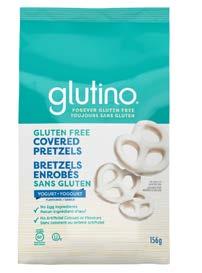




CELIAC EXPLORER
A CELIAC JOURNEY IN ASIA
MARK JOHNSON CELIAC CANADA VOLUNTEER, CCA CONFERENCE MCJanuary 2023, my wife and I took a three-week holiday around east and southeast Asia, recognized for being quite difficult for a celiac for myriad reasons; the language barrier, of course, but there’s also generally a lower understanding of food sensitivities/allergies. Gluten-containing sauces lurk everywhere, and cross-contamination does not even seem to be a consideration.
I spent a lot of time in advance planning and researching, reading websites and blogs, soliciting reviews on Facebook groups, checking the Find Me Gluten Free app, and combing through Yelp and TripAdvisor reviews that mention ‘gluten free’. While I love east/ southeast Asian food, I knew this wasn’t going to be easy food-wise. Continued on next page

While I love east/southeast Asian food, I knew this wasn’t going to be easy food-wise – Mark Johnson
Twelve of our twenty-two days would be on a cruise, where I generally don’t worry about getting gluten-free food. I tend to cruise with Celebrity, though I’ve had wonderful experiences with Royal Caribbean, and heard many good things about Virgin, Princess, Oceania, Norwegian, Disney, and P&O. The “before and after” the cruise was the challenge.
Starting in Shanghai, China, we visited my brother, his wife and son (who I hadn’t yet met, due to the pandemic).
I booked a Holiday Inn that included breakfast, the easiest meal to do gluten free where I can always find something. The first morning, I was thrilled to see each item on the buffet had an allergen card, showing whether it had gluten, dairy, egg, etc. Amazing!
Unfortunately, my heart immediately sunk when I saw gluten-filled onion rings and noodle dishes listed as gluten free, as well as breaded sweet and sour pork. I chuckled when I noted that the milk for coffee apparently had no dairy! You get the idea.
Relying on allergen cards immediately went out the window. Staff spoke no English, so there was no negotiating, and while I had a Chinese language travel card, a


Chinese friend back home had told me the card didn’t make sense. So, I was on my own. Luckily, with help from Google Translate, I found that I could eat their fried eggs made only with oil. Add fresh chopped veggies (cucumber, peppers, etc.), some fruit, cheese, and coffee, that was breakfast.
The hotel room had a mini fridge, so I stocked up on fruit and cheese from the local supermarket, on which I would come to rely. I’d found a couple of Shanghai
restaurants reportedly reliable for celiacs (not just the “gluten free by choice” crowd). That’s right, two restaurants… in a city of 26 million. We ended up not eating at the first, because it would have been a 45-minute wait, at an outdoor table only. No fun in a windy four degrees Celsius. The prices were also obscene. $60 for a modest dish of paella, $20 for a small app-size garden salad or $150 for regular steak. My brother called it “foreigner prices” as it was in an expat area.
We’d already spent a lot of money on the trip, so that evening dinner looked like eating grapes and tangerines in our hotel room. Eventually we found a sushi restaurant, where my Chinese sister-in-law chatted with staff about my needs, and I was able to eat some very plain salmon nigiri, sashimi, and a bowl of steamed rice. I spent around $15 Canadian and was quite happy with that price.
Next day, my brother suggested we try a Korean BBQ restaurant, offering a choice of unmarinated meats and veggies you cook on an element in the middle of the table. Wary of the risk, I reluctantly agreed to go, as my sister-in-law’s parents were joining so it was a chance to meet them. It went pretty well. I got my very own grill, Continued on next page
I got my very own grill, thoroughly cleaned under my supervision, ... I enjoyed cooking raw beef and pork, unmarinated ... – Mark Johnson

thoroughly cleaned under my supervision, and I enjoyed cooking raw beef and pork, unmarinated, and unseasoned.
Waiters brought me lettuce to make “wraps” and I added gluten-free soy sauce I’d brought from Canada, for flavour. Success! I credit my sister-in-law for all the arranging with the restaurant – I’d have been lost with only a few words of Mandarin.
At other restaurants we tried,

I could eat nothing but plain steamed rice which I happily accepted. Beggars can’t be choosers. I knew China was going to be a challenge! Apart from those adventures, I relied on provisions from the grocery store.
Fortunately, it was uphill from there. Next stop Bali, from where our cruise left. My research, including the Gluten Free in Bali Facebook group, led me to a highly rated restaurant called The Pad Continued on next page

on Bene, owned by an Australian. They offered several GF options. I booked a hotel a five-minute walk away and ate there for dinner and breakfast.
Breakfast was a delicious avocado and bacon sandwich, with a café latté. Dinner was a smoked salmon sandwich and a chicken sandwich shared with my wife. I never got to meet the owner, but his staff were wonderful. They don’t get many Canadians in Bali – tons of Australians though! My accent got me some curious looks.

The cruise was wonderful. On the Celebrity Millennium, everything at the buffet was labeled, dishes spaced out with designated tongs to stop people using the wrong ones. Still, I was cautious.
When a norovirus broke out on the ship (we were spared, thankfully) the buffet self-serve ended and everyone was served by staff, so way less risk of cross-contamination! The pizza and pasta stations provided gluten free on request-- handy as they were open from noon to midnight--and my breakfast was usually smoked salmon, eggs, and some GF sautéed veggies. Mmm.
Dinners were a formal affair. I could pre-order the night before allowing my food to be prepared
in a separate completely gluten free area. I ate sooo much seafood, and loved it all. I also enjoyed turkey, duck, and beef filet mignon. Lots of tasty salads and desserts –mostly mousse and crème brûlée. I did not go hungry at all!
The cruise visited Indonesia, Malaysia, Thailand, and Singapore. I relied on the cruise ship for meals, and just had lattés when I was out and about.
In Phuket, Thailand, we had an overnight stay so I had to find food. A place on Find Me Gluten Free was a 15-minute walk from our hotel, with a high rating.
But they’d run out of gluten-free bread, so no sandwiches. I went
with gluten-free flour pancakes. Doughy, but ah well, safe was all I needed. I picked up fresh mango and guava. A bonus was going for a ninety-minute massage at around $20 Canadian – nice!! We went twice.
The locals seemed surprised to see white people speaking English. While Bali was full of Australians, Phuket was full of tourists from Russia. Lots of signs on the street were in Russian, as well as Thai. Some English too, of course. Between the food, spas, culture, and nightlife, we enjoyed Phuket.
The cruise ended in Singapore, and after a quick city tour, we went to the airport. In the airport lounge Continued on next page


there was nothing but fruit and cheese. They wouldn’t even do plain rice. Ah well, I was plenty full from the twelve-day cruise!
Next, an overnight layover in Manila, Philippines where my airport lounge eats held me over for the evening, and I filled up on eggs, cheese, and yogurt (with an ingredient list in English, thankfully) before the next flight.
Our last stop – and seventh country – was Seoul, South Korea, for a four-day visit. I’d been there several times; I knew it would be difficult.
First stop was a nearby supermarket. No gluten-free bread, crackers, cookies to be had so I happily stocked up on fresh seafood, and
fruit. We’d booked an Airbnb, anticipating the need to prepare most meals ourselves, so I was able to fry fish, oysters, and squid. I also got thirty eggs, a box of smoked salmon, and a basket of tangerines.
One of our days there, we had a full-day visit to the Demilitarized Zone – the border with North Korea. I brought fruit along, and relied on coffee and the big breakfast I’d cooked at home.
Our last full day in Seoul, I discovered Sunny Bread bakery on the Wheat and Gluten-Free in South Korea Facebook group. The owner, Sunny, is Korean but lived in San Francisco, where she was diagnosed celiac. She explained that celiac is not really known or
recognized in Korea – many doctors deny it can impact Koreans at all. She feels like she’s on her own, but gets business from the few Koreans who eat gluten free, as well as expats and tourists like me. She opened the bakery to help people like us, given how difficult it is there.
Sunny was in the middle of moving premises, so sandwiches & French toast, were off the menu. My choices were cupcakes, cookies, and coffee drinks. I didn’t mind at all! We had chocolate cupcakes with choco-vanilla and peanut butter icing. We tried a sprinkles cookie, one of the best gluten-free cookies ever! I quizzed Sunny about her flour, which is from rice tested down to 5 ppm. Tests are very expensive but a must-do for her business. Everything was delicious! Follow her on Instagram: @sunnybreadkr
Overall, I had a wonderful Asian trip. China was the biggest challenge food-wise, with Korea coming up second. Getting a hotel room or Airbnb with a kitchen makes life a lot easier, insulating you from the celiac-unfriendly outside -– no matter where you go. If you don’t mind going without flour-based items, there was plenty of gluten-free eggs, fruits, vegetables, meat and fish, plain cheeses. With planning and patience, even Asia can be done gluten free! u
WYATT’S STORY –A MOTHER’S PERSPECTIVE
Toddler Wyatt nearly died but then learnt to thrive after diagnosis. Wyatt’s story was featured in the CCA’s Spring fundraising campaign. Here’s the behind-the-scenes story from his mother, Kerri Colford
Any parent would expect a very hyper, excited child on Christmas morning but Wyatt woke up, came downstairs, looked at his gifts, turned to us and said, “I want to have a nap.” That exemplifies how devoid of energy, life, and spirit our son was at that time, which was just a few weeks before his diagnosis
– Kerri Colford
There were a few moments where it was clear to us that Wyatt’s condition was serious. One of the more salient ones was Christmas Day 2022 just two months after his second birthday. Any parent would expect a very hyper, excited child on Christmas morning but Wyatt woke up, came downstairs, looked at his gifts, turned to us and said, “I want to have a nap.” That exemplifies how devoid of energy, life, and spirit our son was at that time, which was just a few weeks before his diagnosis.
At the time it seemed like Wyatt’s sickness came on very quickly, but in retrospect, we saw the slow decline, starting with intermittent vomiting about eight months prior to diagnosis. We were new parents. Our child was born during Covid, and we chalked it up to him just having a weak stomach and inexperienced immune system. I talked to other parents about the Continued on next page
Our child was born during Covid, and we chalked it up to him just having a weak stomach and inexperienced immune system – Kerri Colford

Wyatt before his celiac diagnosis
vomiting and weight loss, which at first was slow. They confirmed kids have ups and downs and their own kids had gone through periods of vomiting for no apparent reason.
Everything took a turn around his second birthday. We saw a change in his personality. He drastically started to lose weight. Six pounds in a month. When you’re only twenty-five pounds, that’s a lot. He stopped engaging. He stopped playing. He would stand at the bottom of our stairs and not move, looking up, completely drained and weak. The month of December, the month before he was diagnosed, we thought that the outcome was going to be dire. We’d cry when Wyatt wasn’t around.
He was malnourished and ultimately starving to death. His skin had started to yellow and he would sleep three times a day outside of his regular bed-

Wyatt, now, happy and healthy
time. When we finally got the bloodwork back from our family doctor—who told us it looks like celiac disease—I called the paediatric gastroenterologist that day and basically said we cannot wait for an appointment. We got in to see him within 48 hours. The gastro also believed Wyatt had celiac, even before all test results came back. He spent over an hour with us and gave us options.
Because Wyatt was so very sick he immediately had to go gluten free. His life depended on it. We cleaned out our kitchen and restocked everything. No easy or cost-effective task. I read seven books in the span of a few months and did some of the webinars with Celiac Canada as well as used some of their resources.
My husband and I got tested, which is standard practice, and in June Andrew, Wyatt’s dad, was also diagnosed. Continued on next page
Now almost a year out our lives are very different. Our little man is thriving. Wyatt has a fantastic appetite – Kerri Colford
Now almost a year out our lives are very different. Our little man is thriving. His tTg level is finally down to a normal range from being off the charts when he was diagnosed in January 2023. Wyatt has a fantastic appetite. He is a happy, excitable, thriving, chubby little three-year-old, full of humour, wonder and love.

Wyatt and his dad, Andrew
We started educating Wyatt on his condition right away. He knows he has celiac disease and he cannot eat gluten. He also knows most other kids don’t have celiac. Education has been a big component of our lives since this new normal. We have had to educate his daycare providers, the entire family and friend base. The resources provided by Celiac Canada were
a big help and really helped us feel confident, especially those focused on kids’ health.
We stop gluten at the door, opting to have a gluten-free house where we all eat the same thing together, sharing food and eating off each other’s plates if we want. We are a family who has always bonded over good dinners, new food experiences and now is no different.
It’s been the scariest time in our lives but also the most life affirming. Seeing the colour, joy, and wonder come back to our brave little boy has been the best gift. u

As a grandmother anything that causes your grandchild pain is doubly searing – Phyllis Bordo
PHYLLIS BORDO’S STORYTeenager triumphs –A GRANDMOTHER’S STORY
As a grandmother anything that causes your grandchild pain is doubly searing. Watching Brian and his mother deal positively with the angst that came with her son’s celiac disease diagnosis has been inspirational.
Brian, loved to ride his bike, and raid my candy cupboard. He played baseball and wrestled with his cousins. When Covid hit in March 2023, we got through the isolation using Facetime, grateful for the technology.
Brian found online-schooling difficult. Any assignment needed a lot of home supervision to keep him focussed enough to complete it. He’d lose concentration in an instant. I knew he wanted to do better but couldn’t. Many kids were struggling so I thought his concentration would improve when life got back to ‘normal’.
After Covid isolation Brian didn’t get better. His grades stayed low. His energy low. He turned teenage but stayed close to home, not venturing outside to play sports with his friends or ride his bike. He was tired and complained of headaches and mild stomach aches. His growth slowed. We put it down to a late growth spurt.

Something just wasn’t right. A Bone Age Assessment x-ray and physical exam came back ok. He was late entering puberty that’s all I thought. But the pediatrician ordered one more test. For celiac disease.
He can’t have that, I thought. And if he does, it’s not serious is it? It won’t change his lifestyle? He just won’t eat bread or wheat products. I soon discovered; it was a lot more than that. Continued on next page
Brian took up the challenge. He was not going to let this disease define him. I stood by with pride ... – Phyllis Bordo
Brian made drastic changes ... There is no pill. A gluten-free diet was the only way. Will it heal the intestine and promote growth? Will sticking to a gluten-free diet prevent him getting other autoimmune diseases? What about his mental health? My mind was spiralling.
– Phyllis Bordo
The blood test for celiac disease came back positive. Confirmed later by a biopsy after a six week ‘gluten challenge’ consuming all things gluten. Candy, cupcakes, pasta. These left Brian with the classic symptoms of cramping, bloating and stomach aches. He was uncomfortable and moody.
Looking back Brian had shown these symptoms once in a while for the last couples of years, but only once in a while. Headaches, stomach pains and exhaustion.
Mid way through the morning, my cell rang, and my daughter’s name appeared on the screen. A brief silence hung in the air after I said “Hello.” Before my daughter spoke, I knew the result of the endoscopy. Brian had celiac disease.
My stomach sank to my feet and a flood of sadness washed over me. Brian’s small intestine was damaged and he wasn’t absorbing food properly. A change in
diet is the only cure for celiac disease and the only way to repair the damage. What did that mean for Brian? He was a fourteen year old kid, post Covid, used to raiding the candy cupboard with his cousins, who wants to hang out with friends at a pizza shop, who loves egg sandwiches. Are Cheetos gluten free? What about when he goes to a friend’s house for lunch and ...?
Brian made drastic changes realising if left untreated, his autoimmune disease could lead to serious health problems such as cancer or Type 1 diabetes. There is no pill. A gluten-free diet was the only way. Will it heal the intestine and promote growth? Will sticking to a gluten-free diet prevent him getting other autoimmune diseases? What about his mental health? My mind was spiralling.
Brian took up the challenge. He educated himself, learned how to read product labels and speak up when eating out. He was not going to let this disease define him. I stood by with pride, my fears healed by his positivity. He educated his friends about the disease and explained the smallest bit of gluten could damage him. Some friends didn’t take his diagnosis seriously, “Just don’t eat bread.” His good friends however were willing to learn and stood by him.
Brian is growing; his symptoms are dissipating, his grades have improved, he parties and is living life. I make family dinners gluten free by studying labels and going to gluten free shops. His aunts and uncles serve gluten-free food at family gatherings.
My daughter educated herself and handled the change with strength and positivity.
Brian and my daughter are inspirations for all of us. Meet the challenge head-on, make the changes so healing and a happy life are possible. u
 DEAR DIETITIAN
DEAR DIETITIAN
NOURISHING WELLNESS: A dietitian’svital role supporting the celiac population
HEENAL NANDHA
CELIAC CANADA
DIETETIC INTERN
Living with celiac disease can present a multitude of challenges, from navigating grocery store aisles to dining out safely. Amidst the complexities of managing a gluten-free lifestyle, the role of a dietitian shines brightly as a beacon of support and guidance. Let’ s explore the crucial importance of dietitians in empowering and advocating for individuals living with celiac disease. Continued on next page
By optimizing nutrient intake, dietitians help individuals with celiac disease thrive and maintain optimal health
UNDERSTANDING CELIAC DISEASE
Celiac disease is an autoimmune disorder triggered by the ingestion of gluten, a protein found in wheat, barley and rye. For individuals with celiac disease, consuming gluten can damage the small intestine, leading to a wide range of symptoms including diarrhea, fatigue, weight loss, bloating, gas, abdominal pain, nausea and vomiting, constipation, headaches and fatigue, irritability, anemia, joint pain and brain fog. It can also lead to more serious complications if not managed or treated.
NAVIGATING THE GLUTEN-FREE DIET
Enter the superhero of the celiac world: the gluten-free diet. The cornerstone of managing celiac disease is sticking to a strict gluten-free diet. But here’s the catch – avoiding gluten isn’t as simple as steering clear of bread and pasta. Gluten can be found in unexpected places, from sauces and seasonings to processed foods and beverages. That’s where the expertise of a dietitian comes in handy.
THE ROLE OF A DIETITIAN
Dietitians play a pivotal role in supporting individuals with celiac disease at every stage of their journey. From diagnosis to long-term management, dietitians provide personalized guidance tailored to everyone’s unique needs and lifestyle. Here are some key ways in which dietitians support the celiac population:
1. Education and Counseling
Dietitians are experts in translating complex nutritional information into practical advice. They educate individuals with celiac disease about the importance of a gluten-free diet and provide guidance on reading labels, identifying sources of gluten, managing symptoms and making informed food choices. Through one-on-one counseling sessions, dietitians empower individuals to take control of their health and well-being.

2. Meal Planning and Recipe Modification
Navigating the world of gluten-free cooking can be overwhelming, but dietitians are skilled in helping individuals adapt their favorite recipes and plan balanced meals that meet their nutritional needs. Whether it’s swapping out gluten-containing ingredients or discovering new gluten-free alternatives, dietitians provide valuable support in creating delicious and nutritious meals while working one-on-one with celiac clients to develop personalized nutrition plans tailored to their unique preferences, lifestyle, and health goals.
3. Addressing Nutritional Deficiencies
Celiac disease can lead to nutrient deficiencies due to malabsorption in the damaged intestine. Dietitians assess individual nutritional status and develop personalized plans to address any deficiencies, whether it’s through dietary modifications, supplementation, or other interventions. By optimizing nutrient intake, Continued on next page
Whether you’re
newly diagnosed or a
seasoned celiac
pro,
partnering with a dietitian can empower you to take control of your health
dietitians help individuals with celiac disease thrive and maintain optimal health.
4. Advocacy and Support
Beyond the realm of nutrition, dietitians serve as advocates for individuals with celiac disease, helping them navigate healthcare systems, access resources, and connect with support networks. Dietitians understand the unique challenges faced by the celiac population and provide compassionate support every step of the way.
As we wrap up our exploration of the role of dietitians for the celiac population, I hope you’ve gained a deeper appreciation for the invaluable support
they provide. Whether you’re newly diagnosed or a seasoned celiac pro, partnering with a dietitian can empower you to take control of your health and thrive on your gluten-free journey. Remember, you’re not alone – dietitians are here to guide you every step of the way. Cheers to nourishing lives and embracing the gluten-free lifestyle with confidence! u
Helpful Resources
Evidence Based research on celiac disease
Gluten-free diet and food safety
Gluten Related Disorders
Find a Dietitian
Gluten-free recipes
Newly diagnosed with Celiac disease
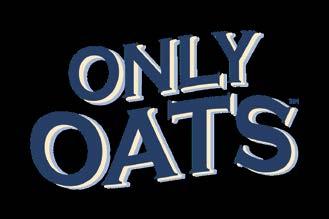





This dedicated team of registered dietitian volunteers are specialists in celiac disease and the gluten-free diet.
CELIAC CANADA DIETITIAN WORKING GROUP (RDWG)
IMPROVING QUALITY OF LIFE OF CANADIAN CELIAC COMMUNITY
Celiac Canada established a Dietitian Working Group, known as the RDWG, in January 2021. The purpose is to provide a collaborative space for registered dietitian members to contribute to education and increase awareness and advocacy efforts on behalf of Celiac Canada.
This dedicated team of registered dietitian volunteers are specialists in celiac disease and the gluten-free diet. They bring a wealth of knowledge to improve the quality of life for the Canadian celiac community and educate Canadian dietitians and other health professional about celiac disease and the gluten-free diet.
Two of the RDWG members are also on the CCA Professional Advisory Council – Shelley Case, RD in private practice from Calgary who is chair of the RDWG and Inez Martincevic, RD at Sick Kids Hospital in Toronto. Other members are Jedid Blom, RD from McMaster University Celiac Disease Clinic, Meagan Vulzinger,
RD at BC Children’s Hospital and Jess Pirnak, RD in private practice in Vancouver. Celiac Canada staff member Caleigh McAulay, RD, Health Promotions and Research Manager from PEI is the liaison with the RDWG. Former members have included Nicole Byrom, RD from Vancouver and Dayna Weiten, RD from Winnipeg.
Meeting monthly online, the RDWG has made huge contributions over the past 3 years. Some of the many accomplishments are highlighted below:
COLLABORATION WITH DIETI -
TIANS ACROSS CANADA
Dietitians of Canada Practice-Based Evidence in Nutrition (PEN)
PEN is an online food and nutrition database with summaries of evidence and recommendations for practice. It also provides dietitians with practical resources and other tools for educating clients. The RDWG reviewed and revised existing recommendations and resources as well as developed new educational materials. This is very important so that dietitians will be providing up-to-date resources about CD and GFD which ensures that consistent messages and information are being used across the country. Each handout has Dietitians of Canada, PEN and Celiac Canada logos demonstrating the strong partnership and added credibility. The RDWG is develop Continued on next page
Each handout has Dietitians of Canada, PEN and Celiac Canada logos demonstrating the strong partnership and added credibility






ing additional resources and tools for PEN.
The following new resources are currently available on the DC PEN site in English and French. Next phase is to have these resources translated into Punjab and Urdu:
z Gluten-Free Diet and Gluten-Related Disorders: Getting Started
z Gluten-Free Diet and Gluten-Re-
lated Disorders: Meal and Snack Ideas
z Gluten-Free Diet and Gluten-Related Disorders: Meal Planning
z Gluten-Free Diet and Gluten-Related Disorders: Cross-Contamination www.pennutrition.com (Dietitian of Canada members access only)
Alberta Health Services Nutrition Services Division
The RDWG reached out to dietitians at AHS to share information about CD and GFD. AHS dietitians welcomed this collaboration and the RDWG reviewed and provided input about existing materials. The 3 handouts were on the GF Diet, Fibre and the GF Diet and Helping Your Child with the GF Diet. Nutrition Education | Alberta Health Services Continued on next page
Pocket Dictionary...A
review of all the ingredients and their safety status was undertaken. The new online pocket dictionary is now available
Development of {Food labelling guidelines} ... required many meetings over 12 months due to the complexity of the topic ...
The RDWG wanted to ensure that the safety information and all the regulatory information was presented in an easy-to-understand format and be very practical for consumers and health professionals
Edmonton Celiac Researchers
Professor Diana Mager, PhD, RD and Dr. Justine Turner, pediatric gastroenterologist and their team received a JA Campbell Research Award to develop a Gluten-Free Food Guide for Children and Youth. The RDWG provided extensive feedback and review of the Guide over the entire course of development.
UPDATED AND CREATED RESOURCES FOR CELIAC CANADA
Food labelling: guidelines for Individuals with celiac disease following a gluten-free diet
Development of this new resource required many meetings over 12 months due to the complexity of the topic. There were many challenges because scientific studies on the safety and risk levels of various foods and ingredients needed to be reviewed. The RDWG wanted to ensure that the safety information and all the regulatory information was presented in an easy-to-understand format and be very practical for consumers and health professionals. Check out the latest version.
Pocket dictionary of ingredients
A review of all the ingredients and their safety status was undertaken. The new online pocket dictionary will now be available to read or can be printed here.
REVIEWED AND DEVELOPED POSITION PAPERS, POSTER PRESENTATIONS AND OTHER MATERIALS
The RDWG was very busy reviewing and providing extensive feedback on a variety of consultation documents from Health Canada (HC) and the Canadian Food Inspection Agency (CFIA) on behalf of CCA. Also, the RDWG submitted recommendations to CFIA for testing different food categories for gluten levels.
Some of the major documents submitted included:
z Health Canada Future Food Regulatory Modernization Priorities Public & Stakeholder Consultation
z Health Canada’s Proposed Regulatory Modernization of Foods for Special Dietary Use and Infant Foods
z State of Celiac Health Survey
z Poster sessions presented at International Celiac Disease Symposium in Italy
– Introduction of Gluten-Free Oats in the Gluten-Free Diet of Children and Adults with Celiac Disease: An International Survey
– The Canadian Celiac Association Labelling Survey Reveals Significant Challenges for Individuals on a Gluten-Free Diet
z Reviewing and updating content on CCA website u
Let’s explore common ingredients used in crafting gluten-free flour blends, their functionality, taste, and nutritional properties

GLUTEN-FREE FLOUR 101
FOCUS ON gluten-free flour ingredients and blends
When it comes to gluten-free baking, all-purpose flour blends are the key ingredient. Successfully baking gluten-free breads and pastries requires blends that are formulated with a delicate balance of flours, starches, and gums to mimic the structure, texture, and taste of conventional baked goods. Continued on next page
When choosing a gluten-free flour blend, it is essential to consider factors such as nutritional values, origin, taste, texture, availability, and price, along with any specific dietary restrictions or preferences

Let’s explore common ingredients used in crafting gluten-free flour blends, their functionality, taste, and nutritional properties.
Grain flours are widely used. They bring volume and texture to most gluten-free blends.
z White rice flour is a staple in gluten-free baking as it provides a neutral flavour and smooth texture.
z Brown rice flour is made from the whole grain, which includes bran, a good source of fibre. It has a rather neutral flavour, although lightly on the nutty side. As a single ingredient, it may be used to thicken sauces and gravies. Brown rice flour is easy to digest and a source of 8 essential nutrients.
z Sorghum flour has a mild, slightly sweet flavour and a fine texture. It is often used as a brown rice flour substitute for consumers looking to diversify their diet.

z Gluten-free oat flour brings moisture and results in a chewier, more crumbly texture. Oats and oat flour are often subject to contamination, depending on how they were grown and where they were processed. It is essential to look for a “gluten-free” claim for products containing oats.
Legume flours have been gaining popularity as plantbased sources of protein. However, their texture tends to be grainy, and they may be a bloating trigger for some people.
z Chickpea flour is also known as garbanzo or gram flour. It has a nutty taste and grainy texture. It’s a good source of fibre, protein, and minerals such as magnesium and potassium. It
may also be used as a base to make falafel, hummus, and flatbread.
z Fava bean flour nutritious and an excellent source of soluble fibre, protein, folate, manganese, copper, and several other essential nutritional elements.
z Lupin seed flour ranks high among legume seeds as it is a good source of nutrients, mainly proteins, but also lipids, dietary fibre, minerals, and vitamins.
Tree nut flours are not so common in commercial blends because of their high cost. However, they are highly nutritious and should be considered as additional ingredients in some recipes.
z Almond Flour lends a rich, nutty flavour and moist crumb to baked goods. It is a good protein and contains healthy fats. It is one of the most common grain- and gluten-free flours. Almond flour contains a variety of minerals, including iron, magnesium, calcium, potassium, copper, and manganese.
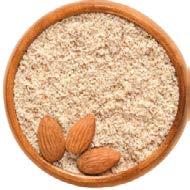
z Chestnut flour is more common in Southern Europe than in North America. It has a nutty flavour and is loaded with essential nutritional elements such as vitamin B9 and magnesium. It is also a good source of fibre.
z Coconut Flour is highly absorbent and adds moisture to most recipes. It adds a slight coconut flavour and a light, airy texture to baked goods.

Ancient grain and seed flours are premium ingredients that help boost the nutritional profile of certain gluten-free blends to mimic whole wheat flour. With their distinctive taste and flavour, Continued on next page

and high cost, they are used in smaller proportions in high-end blends.
z Buckwheat has a grayish colour and distinctive hazelnut-like flavour. Buckwheat flour is a source of fibre and magnesium. It contains all essential amino acids. This is a tradition al staple in Western France, brought by early settlers of Quebec and Maritime Provinces where it has been locally cultivated ever since.

Starches are a common group of ingredients in gluten-free blends, bringing elasticity, moisture, and softness to baked goods.
z Tapioca starch is processed from the cassava root and is also called tapioca flour. It has a neutral taste and adds chewiness and elasticity to gluten-free baked goods. It may be used as a single ingredient to thicken soups and sauces.
z Quinoa is a pseudocereal originating from South America, along with amaranth and buckwheat. It is a source of fibre, minerals, antioxidants, and proteins.
z Amaranth has an earthy, nutty flavour. Amaranth flour is a source of protein, essential nutritional elements such as iron, magnesium, phosphorus, and manganese. It is also a source of fibre.
z Millet is a good source of protein, antioxidants, and nutrients such as phospho rus and magnesium. Because of its yellow colour, it is not often used in all-purpose blends which aim for an off-white colour that resembles whole wheat flour.
z Chia seeds are a great source of fibre and protein and one of the best plant-based sources of omega-3’s. Chia can be used as a thickener and gelling agent in many recipes.
z Corn starch contributes to the lightness and softness of baked goods. It is often included in gluten-free flour blends to improve the crumb structure.
z Potato starch helps with moisture retention and tenderness in gluten-free recipes. It contributes to a soft and fluffy texture in baked goods.
z Arrowroot flour is a less common gluten- and grainfree powder. It is processed from the maranta root.

z Flaxseed is high in fibre and provides good amounts of protein. It is one of the best plant-based sources omega-3 fatty acids. It also has gelling properties and retains moisture in baked goods.
Note: due to the high risk of cross-contamination, it is recommended you purchase grains, flours, legumes and seeds (flax, hemp) with a “gluten-free” claim.
As with other starches, it may be used as a thickener for sauces and gravies.
Texture agents and binders are necessary to make up for the absence of gluten. This requires specific ingredients to emulsify, strengthen, and bring elasticity to doughs and batters. There are two main options: gums and fibres.
z Xanthan Gum or Guar Gum are the hydrocolloids, literally meaning water-activated glues. They help mimic the elasticity of gluten, especially during the fermentation process where carbon dioxide needs to be trapped for breads to rise properly.

z Psyllium husk is a form of fibre extracted from the seeds of the Plantago ovata plant. It acts as a binder as well as fibre content booster, to lower the net carb count in certain products.
Continued on next page

Gluten-free flour blends open a world of possibilities for individuals with gluten intolerance or celiac disease, allowing them to enjoy a wide variety of baked goods without compromising on taste or texture. By understanding the functionality of ingredients and the principles behind commercial gluten-free flour blends, you can unleash your creativity in the kitchen and indulge in delicious homemade treats tailored to your dietary preferences. Experiment, explore, and savour the joys of gluten-free baking with confidence and enthusiasm
There is a wide variety of all-purpose blends to choose from in retail stores or online, includ ing imports, store brands (private labels), and Cana dian-made local blends.

When choosing a gluten-free flour blend, it is essential to consider factors such as nutritional values, origin, taste, texture, availability, and price, along with any specific dietary restrictions or preferences.
Some ingredients may be hard to source at times for manufacturers, which can explain some frustrating out-of-stock situations on store shelves. Also, prices can seem high when compared to wheat flour. This is because all-purpose gluten-free flour mixes are the result of lengthy research protocols by manufacturers, often using exotic and expensive ingredients.
Lower priced blends tend to contain a high proportion of starches and additives such as carboxymethylcellulose. Other blends focus on specific diets such as Low FODMAP or intolerances to certain ingredients. Some brands introduce highend ingredients such as ground flaxseed for fibre and omega 3’s, while only a handful offer organic certified blends. Continued on next page

Certain manufacturers even offer custom blends to suit specific dietary restrictions and intolerances.
One of the great advantages of certain gluten-free blends lies in the opportunity to diversify the grain, seed and pseudocereal intake in one’s daily diet, as opposed to single ingredient wheat flour.
Some blends may work better for certain types of recipes than others, so it is essential to experiment to find the best option for you. Always remember to check the ingredient list and allergen information to ensure that the blend meets your dietary and nutri-
tional requirements.
Gluten-free flour blends open a world of possibilities for individuals with gluten intolerance or celiac disease, allowing them to enjoy a wide variety of baked goods without compromising on taste or texture. By understanding the functionality of ingredients and the principles behind commercial gluten-free flour blends, you can unleash your creativity in the kitchen and indulge in delicious homemade treats tailored to your dietary preferences. Experiment, explore, and savour the joys of gluten-free baking with confidence and enthusiasm. u











GFCP Program Partner

QUICK & EASY PIZZA,OGGI FOODS
CCA sat down with Montreal-based President Raffaele Falso for a Q & A
Celiac Canada was instrumental in creating standards for gluten-free certification in Canada that have been adopted worldwide. Our Gluten-Free Certification Program, GFCP is run by the world’s largest certification organization, the BRCGS and guarantees products have less than 20 ppm gluten are free of contamination and made in certified gluten-free facilities. You know when you see the label, you are safe to eat it. Continued on next page
OGGI is revolutionizing gourmet, gluten-free... pizzas. We must be doing something right. We’ve sold over 200 million pizzas– Raffaele Falso
We sat down with Raffaele Falso, Marketing & Creative Director, to learn all about Oggi Food’s story and why GFCP is a valuable part of their product development.
What does OGGI mean?
OGGI (o-gee) means “today” in Italian.
When did the company start?
OGGI started in 2015 - but dates back to the early 2000s, from original founders, Stefano Cataldo, Angelo Cataldo and Antonio Merulla. Stefano had a family member who loved pizza but was diagnosed with celiac. Italians love to eat together. When one can’t because of a disease, that’s a problem needing a fix. So OGGI was born.
What’s the secret in the crust?

OGGI’s gluten-free cau liflower and regular crusts have won multiple awards thanks to their rising air pockets –a first-of-its-kind in the gluten-free pizza industry.
The family comes from Naples where everyone has their own beloved pizza-making tradition. We took that recipe, perfecting it over thirty years to make it the most authentic-tasting Neapolitan, gluten-free pizza on the market. The crust is made of corn, potatoes, and rice flour. Our topped pizza is made with premium tomatoes, fresh mozzarella, homemade basil. Our ingredients are all natural, GMO free, and SOY free.
What’s OGGI’s mission for gluten-free?
OGGI is revolutionizing gourmet, gluten-free Italian pizzas. We be-
lieve most other gluten-free pizzas on the market taste like a cracker and don’t use quality, gourmet ingredients as we do. Which is why OGGI pizza tastes and looks like a restaurant-style pizza. We must be doing something right. We’ve sold over 200 million pizzas!
What makes OGGI stand out?
Each crust is hand-stretched and stone-baked, for a truly authentic Neapolitan experience.
What awards has OGGI won?
Multiple awards thanks to their rising air pockets. For example, the Canadian Grand Prix, Sysco Cutting Edge, Best New Product Awards, FABI Awards and FABI Favourites.
What’s your most popular flavour?
Margherita is the most popular.

What are people looking for when they buy OGGI?
Authentic Italian-tasting food that’s gluten-free, vegetarian, or vegan options. In particular, convenience (our products come frozen) and health-conscious consumers, who live fast-paced lives and are looking for healthy alternatives.
Where can people find your products?
In all major grocery stores and Costco across Canada. Check our store locator. We’re based in Montreal.
Why did you decide to get GFCP Certified?
We want our customers to feel reassured that we are a certified Gluten-Free facility. More info u



Celiac chronicles

GLUTEN-FREE GIANTS
CELIAC SOCIAL SAVIOURS
Meet inspiring social media influencers leading the charge with us in celiac awareness, sharing their gluten-free journeys and recipes for success
In a world where dietary restrictions can feel isolating, three remarkable influencers are breaking barriers and fostering a sense of community. We sat down with them to discuss their motivations, challenges, and hopes for the future.
WHO ARE YOU?
@celiacandthe6ix Ashley Gismondi. Celiac & the 6ix was born out of my love for Drake the musician, and a place to showcase gluten-free food finds, travels and musings about motherhood and sometimes dating in the “6ix,” (Drake’s nickname for Toronto).
@acoupleofceliacs Mary Thompson. I was diagnosed with celiac disease 15 years ago. I share delicious gluten-free recipes, while embracing a gluten-free lifestyle. I was born in New Zealand but now live in West Kewlona, BC.
@thebutternutbakingco. Michelle Moraes. I am an Continued on next page


I started on Instagram in 2017, when I realized I wanted to see more than just people from high school getting engaged and babies on my feed. Not that there’s anything wrong with that, (I’m a mother now to a school-aged child), but at the time I wanted to show there was more to life than those typical milestones. I wanted to show others that you can still explore your city or town and travel the world while living with celiac disease. My account has evolved as I moved from my twenties to my thirties, sharing vulnerable life issues such as loss, dating, home ownership and parenthood. As my slogan goes…” Life, home and travel, with a gluten free twist”.
levels. I had an intestinal biopsy, which confirmed the villi in my small intestine were damaged.
This life-changing event prompted me to rewrite all the recipes I loved making. After my eldest daughter was diagnosed with celiac disease, we started an Instagram account and website to share experiences, tips, and recipes for enjoying food without compromising health.
Mary Thompson @acoupleofceliacs
@thebutternutbakingco. I started in 2017 by opening Canada’s first 100% gluten-free, grain-free, and naturally low-carb bakery that specializes in keto and paleo bakes. It was a privilege to own and operate my bakery for the last 7 years as it’s given me so many incredible opportunities to connect with other inspiring entrepreneurs and colleagues making a difference in the gluten-free space. At the end of 2023, I closed my bakery due to pandemic strain and decided to continue in the gluten-free influencer space as I start my next business finding new ways to bring healthy and delicious gluten-free food to the community.
WHAT INSPIRED YOU TO FOCUS ON GLUTEN-FREE/CELIAC CONTENT?
@celiacandthe6ix I have been living with celiac disease for 19 years. Although there were other gluten free influencers in Toronto when I started, I had a unique perspective as a new homeowner and living with a partner who wasn’t gluten free. I also loved to travel and didn’t see too much discussion around celiac travel. One benefit of running my account, is I’ve made some lovely friends locally and abroad. Many of Continued on next page
 Michelle Moraes @thebutternutbakingco.
Michelle Moraes @thebutternutbakingco.

whom I met while travelling. We’re taught not to trust strangers online as youth, but as an adult, I’ve found my “gluten-free people”.
@acoupleofceliacs My personal experience dealing with the challenges, dietary restrictions, and lifestyle adjustments inspired me to focus on gluten free and celiac content. The beginning of the celiac journey is never easy for anyone, and I want to share the knowledge, tips and recipes I learned to give others a head-start and possibly prevent them from making the same mistakes I made. A desire to help and support others facing similar struggles, was the driving force behind creating content specifically for the celiac community.
@thebutternutbakingco. I am a foodie at heart with celiac disease and! I was only 27 when I was inspired to open my gluten-free bakery in Toronto to focus on gluten-free and celiac content to spread the word about a new way of baking.
WHAT CHALLENGES HAVE YOU FACED AS A GLUTEN-FREE/ CELIAC INFLUENCER?
@celiacandthe6ix There’s constant pressure to pump out content, but I want to show up authentically and tell a story behind what I’m posting. I also am pitched on occasion from brands/restaurants that
aren’t a great fit. If it revolves around food, I ask a lot of questions to ensure that products are safe and that restaurants will have my best interests in mind before I share it with the wider gluten-free community. Trust and integrity are important, and I am not afraid to say no, something better will come along.
One thing people don’t see is the administrative tasks that follow creating content, such as following up for payment. There are real people behind these accounts that have bills to pay and unfortunately, I have been taken advantage of...
@acoupleofceliacs As a celiac influencer, I face several challenges. Crafting delicious and accessible gluten free recipes demands creativity and experimentation, often hindered by limited ingredient availability. Additionally, educating others about celiac disease and gluten free living requires patience in the face of widespread misinformation.
Finding brand partnerships that align with your values and standards can be challenging, and fostering a supportive community of followers requires consistent effort. Despite these challenges, it is a rewarding and fun experience!
@thebutternutbakingco. It’s difficult to satisfy all dietary restrictions at once with gluten-free content - a lot of my recipes contain almond flour which tends to be delicious and superior in gluten-free baking, however those who have nut allergies can’t eat that.
HOW DO YOU HOPE TO INSPIRE CHANGE IN THE CELIAC COMMUNITY?
@celiacandthe6ix There’s nothing better than simply building awareness, especially in an online space that is full of misinformation. If you’re thinking of sharing Continued on next page

your own gluten-free journey with others, please do. One piece of advice to anyone thinking of starting out is to just start. You are uniquely “you” with a story to offer. It’s hard not to look at others and wonder why you’re still stagnant while others are going viral, however, don’t compare your chapter one to someone’s chapter twenty-five. I like to think of others in the gluten-free community as collaboration, not competition.
@acoupleofceliacs I hope to inspire change in the celiac community and raise awareness by educating others about celiac disease and dispelling myths surrounding gluten-free living.
Advocating for greater accessibility to gluten-free




options in restaurants and clear labeling of gluten-free products is crucial.
Building a supportive community where individuals can share experiences and resources fosters solidarity and empowerment. Living a healthy life while managing celiac disease, and openly sharing one’s journey can inspire others.
@thebutternutbakingco. I hope to inspire people to become label detectives and just because something says it’s gluten-free it doesn’t inherently make it healthy - especially with gluten free baking. I hope to inspire others with better-for-you-baking and cooking with products that are delicious and wholesome! u
Reduced diagnosis wait times and improved management of celiac disease.
Flat-rate federal income tax claim of at least $1,000 per adult and $600 per child to help offset the high cost of the gluten-free diet.
Long-term care and hospital patient safe gluten-free food availability.
Better regulations for restaurant glutenfree food service.
Improved cautionary labelling to truly reflect food content and standardize the use of gluten free on labels.
More celiac research to move closer to a cure.
May is National Celiac Disease Awareness Month. Please make a gift to strengthen the voice that speaks up for you and your loved ones. 4 4 4 4 4 4

BREAKING THE SILENCE
THE LINK BETWEEN CELIAC DISEASE & INFERTILITY
HEENAL NANDHA, CELIAC CANADA DIETETIC INTERN
Are you struggling with infertility? Have you considered the possibility of celiac disease playing a role in your reproductive health challenges? Recent research suggests there may indeed be a connection between celiac disease and infertility, shedding light on an important aspect of reproductive health that many may not be aware of.
Celiac disease is an autoimmune condition triggered by the consumption of gluten1 , found in wheat, barley, and rye. While it's commonly known for gastrointestinal symptoms, such as bloating and diarrhea, its impact on fertility is less recognized. Continued on next page
... considering celiac disease as a possible factor in cases of unexplained infertility may lead to more targeted treatment approaches
Several studies have revealed a higher frequency of undiagnosed celiac disease in individuals struggling with infertility compared to those without fertility issues 2 This suggests that celiac disease may be an underlying factor contributing to reproductive health challenges. Additionally, research has shown that women with celiac disease may be more likely to experience ovarian failure, further highlighting the potential impact of this condition on fertility 3
Screening for celiac disease in individuals experiencing infertility may be crucial for early detection and management 2. Identifying and addressing celiac disease could potentially improve fertility outcomes for those affected 4 Furthermore, considering celiac disease as a possible factor in cases of unexplained infertility may lead to more targeted treatment approaches.
It's important to note that while the research indicates a correlation between celiac disease and infertility 5, further studies are needed to fully understand the complex relationship between the two. Nevertheless, raising awareness about this potential connection is essential for empowering individuals to take control of their reproductive health.
If you’re struggling with infertility and have not been screened for celiac disease, it may be worth discussing with your healthcare provider. By addressing underlying conditions like celiac disease, you can take proactive steps towards optimizing your fertility journey
If you're struggling with infertility and have not been screened for celiac disease, it may be worth discussing with your healthcare provider. By addressing underlying conditions like celiac disease, you can take proactive steps towards optimizing your fertility journey.
REFERENCES
1 Celiac Disease - What is it?Celiac Canada. (2024, January 13). Celiac Canada.
2 Freeman, H. J. (2015, January 1). Infertility and ovarian failure in celiac disease. World Journal of Obstetrics and Gynecology.
3 LASA, J. S., ZUBIAURRE, I., & SOIFER, L. O. (2014, June). Risk of infertility in patients with celiac disease: a meta-analysis of observational studies. Arquivos De Gastroenterologia, 51(2), 144–150.
4 Glimberg, I., Haggård, L., Lebwohl, B., Green, P. H. R., & Ludvigsson, J. F. (2021, March 22). The prevalence of celiac disease in women with infertility—A systematic review with meta-analysis. Reproductive Medicine and Biology, 20(2), 224–233.
5 Peshevska-Sekulovska, M., Gulinac, M., Rangelov, R., Docheva, D., Velikova, T., & Sekulovski, M. (2023, December 6). Navigating the Challenges of Gluten Enteropathy and Infertility: The Role of Celiac-Related Antibodies and Dietary Changes. Antibodies, 12(4), 79. u
new tools
CELIAC CANADA UPDATE
NEW & IMPROVED RESOURCES
We’ve been busy generating a rainbow of new tools from the donations you so kindly make. Here’s a round up of info everyone with celiac needs to know, from fun and games for the youngest kids, to taking care of our most vulnerable seniors. z If you don’t donate yet, here are a few reasons to in future. We can’t find, treat and cure celiac disease without your funds. z Thanks to our Sponsors for their generous support of our programs: O’Doughs, Promise, Glutino, BFree, Metro, Nairns, Schaer, Little Northern Bakehouse, Cuisine L’Angelique. We can only keep on creating vital resources with everyone’s help.
GLUTEN-FREE FOOD SERVICE IN HEALTHCARE: A PRACTICAL GUIDE
Many people with celiac disease have difficulty finding safe and palatable gluten-free meals and snacks in places like hospitals, long-term care facilities and retirement homes. We encourage you to print this guide and take it those who manage these facilities.
For those with celiac disease, eating gluten can negatively affect both mental and physical health, as well as quality of life. The longer the stay in a care facility, the greater the risk.
If you’re a Nutrition/Food Service manager working in healthcare, these guidelines are designed to help you and your staff improve safe and palatable gluten-free food service.
The guide includes comprehensive advice for leadership and teaching tools for front line staff.
Download guide
Continued on next page

NEWLY DIAGNOSED PATHWAY REVAMP

Master the GF diet in three months of 30 specially curated emails. Learn to read labels, avoid cross-contamination and eat safely and confidently when you leave home, go to restaurants or go traveling. This course is a must for those who’ve just found out they are celiac. Spread the word to family and friends so they can learn the skills needed to self-manage and thrive. Sign up
ACCEPTABILITY OF FOOD & FOOD INGREDIENTS FOR THE
GLUTEN-FREE DIET

Part of the Newly Diagnosed Pathway kit when people sign up, this tool teaches people what they can and can’t eat and where unexpected of sources are found. A great resource to learn the GF diet and avoid cross-contamination.
Sign up
CHILDREN AND TEENS FOOD GUIDE

The long-awaited Gluten-Free Food Guide for Children and Youth, crafted by Drs. Diana Mager and Justine Turner’s CONQUER Research Team at the University of Alberta.
Children and youth face unique challenges eating the GFD and Canada’s Food Guide to Healthy Eating doesn’t address these special considerations. This guide was curated for them, to learn what to eat, build confidence and self advocate.
Download
Continued on next page
Resources ... make a massive difference in the lives of people living with celiac disease ... We only exist to serve you, so help us do that by donating today so we can continue to change minds, hearts, laws and lives
GROWING UP CELIAC - REPRINT

A 20-page easy-to-read brochure, available in both English and French, written specifically for parents who have children with celiac disease or gluten sensitivity.
Find out all about CD, tips from fellow parents, nutrition tips, recipes, gluten-free lunch and snack ideas and so much more.
If you’d like a bulk order for a hospital or clinic contact us. Or download a version in English or French

A fun activity book for younger kids to fill in and build self-confidence living with celiac. Drawing, colouring in, spot the difference…lots of fun while learning. Sign up and download
Resources like all the above make a massive difference in the lives of people living with celiac disease. People like you and your loved ones. We only exist to serve you, so help us do that by donating today so we can continue to change minds, hearts, laws and lives. Thanks. Donate today u
I’M STILL ME KIDS ACITIVITY BOOKCCA events
INTERNATIONAL CELIAC AWARENESS DAY LIGHT-UP EVENTS
It’s the sixth year celebrating #ShineALight on celiac disease, where famous landmarks are lit up green. Celiac Canada started the idea in 2018, and it’s now spread worldwide
We encourage you to visit your local shine a light location, and share pictures on social media using #ShineALightOnCeliac and #ccaceliac
NATIONAL LOCATIONS
May 14th
z Bloedel Conservatory, Vancouver
May 15th
z Civic Plaza, Surry, BC
May 16th
z Dieppe City Hall, Dieppe, NB
z Avenir Centre, Moncton, NB
z Ottawa Sign, ByWard Market, ON
z Shaw Centre, Ottawa, ON
z Toronto Sign, CN Tower, Toronto ON.
Melissa Secord, CCA Nat. Exec. Director will be there. She invites you to come down and #ShineALightWithMe
z Olympic Stadium, Montreal, QC *
z Complexe Jules-Dallaire, Quebec City, QC *
z Calgary Tower, Calgary AB
z Peace Bridge, Calgary AB

Science World, Vancouver BC
z Reconciliation Bridge, Calgary AB
z Telus Spark, Calgary AB
z Lethbridge City Hall, Lethbridge, AB
z Medicine Hat TeePee, Medicine Hat, AB *
z Airdrie City Hall, Airdrie, AB *
z Port Moody City Hall, Port Moody, BC *
z Pier, White Rock, BC *
z High Level Bridge, Edmonton, AB
z Epcor Tower, Edmonton, AB
Continued on next page
We
encourage you to visit your local shine a light location, and share pictures on social media using #ShineALightOnCeliac and #ccaceliac
z Fairmont Hotel, Edmonton, AB *
z Community Centre, Sherwood Park, AB
z Festival Place, Sherwood Park, AB
z Legislature Building, Edmonton AB *
z Charlottetown City Hall, Charlottetown, PEI
z Summerside City Hall, Summerside, PEI
z Winnipeg Sign at the Forks, Winnipeg, MB *
z Manitoba Legislative Building, Winnipeg, MB *
z Science World, Vancouver BC
z City Hall, Victoria bc
z BC Legislature, Victoria BC (in person event planned for here)
z City Hall, Port Moody BC
z Pier, White Rock BC
*These locations have been requested and await confirmation. Check for updates
INTERNATIONAL LOCATION S
Thank you to groups across the globe who have joined us to raise awareness of celiac disease. Beyond Celiac, USA; Celiac Disease Foundation, USA; Coeliac Australia; Cœliaque Québec, Canada; Georgian National Celiac Association; National Celiac Association, USA; Celiacos do Brasil; Coeliac UK; Gluten Intolerance Group, USA; Hellenic Society for Celiac Disease, Greece; Slovenian Celiac Society.
Stay up to date on this year’s international locations.
#ShineALightOnCeliac AROUND THE WORLD MAY 16TH
z Biblioteca Mario de Andrade, São Paulo, Brazil
z Centro Cultural FIESP, São Paulo, Brazil
z Edifico Matarazzo, São Paulo, Brazil
z Monumento as Bandeiras São Paulo, Brazil
z Pateo do Colegio, São Paulo, Brazil
z Ponte Estaiada Otávio Frias de Oliveira, São Paulo,

CN Tower, Canada
Brazil
z Viaduto do Chá, São Paulo, Brazil
z Peace Bridge, Fort Erie, Canada
z CN Tower, Toronto, Canada
z Tbilisi TV Tower, Tbilisi, Georgia
z Batumi Stadium, Batumi, Georgia
z Peace Bridge, Buffalo, United States
Continued on next page

Peace Bridge, Fort Erie, Canada; Buffalo, United States
MAY 11 -12
Our annual Give-A-Thon begins! Look out for Power Hours where you can double your dollar donations
CELIAC AWARENESS MONTH – shine a light on celiac disease
Here’s a rundown of national activities:
May 1
Kids colouring contest is open! Win a $100 prize. It’s easy! Download one of our colouring sheets, colour it in and send us a photo! The winner will be announced May 31.

May 2
The Celiac Caucus is hosting a roundtable discussion at Parliament Hill on the State of Celiac Disease. We’ll be sharing results of our 20-year follow up survey with MPs and Senators – outlining continuing challenges and proposing potential solutions to issues you face.
May 11 -12
Our annual Give-A-Thon begins! Look out for Power Hours where you can double your dollar donations. All to help us, find, treat and cure you, our celiac community.

May 15
Join our Gluten-Free 101 webinar where we guide you and help you master your gluten free diet.
May 16
It’s International Celiac Disease Awareness Day! Check out events happening across the country. The international
community is coming together to #ShineALightOnCeliac. Iconic buildings all over the world, including Toronto’s CN Tower and Toronto sign, Montreal’s Olympic Stadium, Edmonton’s Legislature and Vancouver’s Science World,

Legislature Building, Edmonton
will be illuminated green at dusk to raise awareness. Be sure to share with us on Instagram, Facebook, and Twitter how you are shining a light on celiac.
Kids Teach Kids: Green Shirt Day
Continued on next page
Kids teach kids

in Schools. Green-shirt day, show and tell presentations all about celiac, free brownies. Sponsored by O’Doughs. If you missed signing up, use the resources on our website so that your school can still participate in green shirt day for celiac disease.
May 25
The first annual Gluten-Free Bazaar hosted by Mosaic Foundation for women and youth will be in the heart of Oakville, Ontario, from 12:30 to 7:30. It’s not just any event—it’s a celebration of glu-
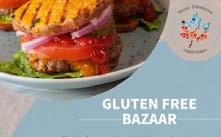
ten-free living, perfect for Celiac Awareness Month!
Celiac Canada will be there to support this event and to provide vital information about celiac disease and spread awareness in the community.
May 26
Gluten Free Garage
If you are in the Greater Toronto Area, come visit the CCA team at the Gluten Free Garage event and bring a non-perishable to support our Save Me for Gluten Free food bank initiative and get some advice from our ‘Ask the Expert’ booth.

Thank you to our Platinum Sponsors, Promise Gluten Free and O’Doughs u





Toddler Wyatt nearly died. Since diagnosis, he’s thriving.
You can help all Canadians with celiac disease (CD) and gluten disorders live their best lives.
Your donations fund research & education, advocacy & support programs. Whatever it takes to find, treat and cure celiac disease.
